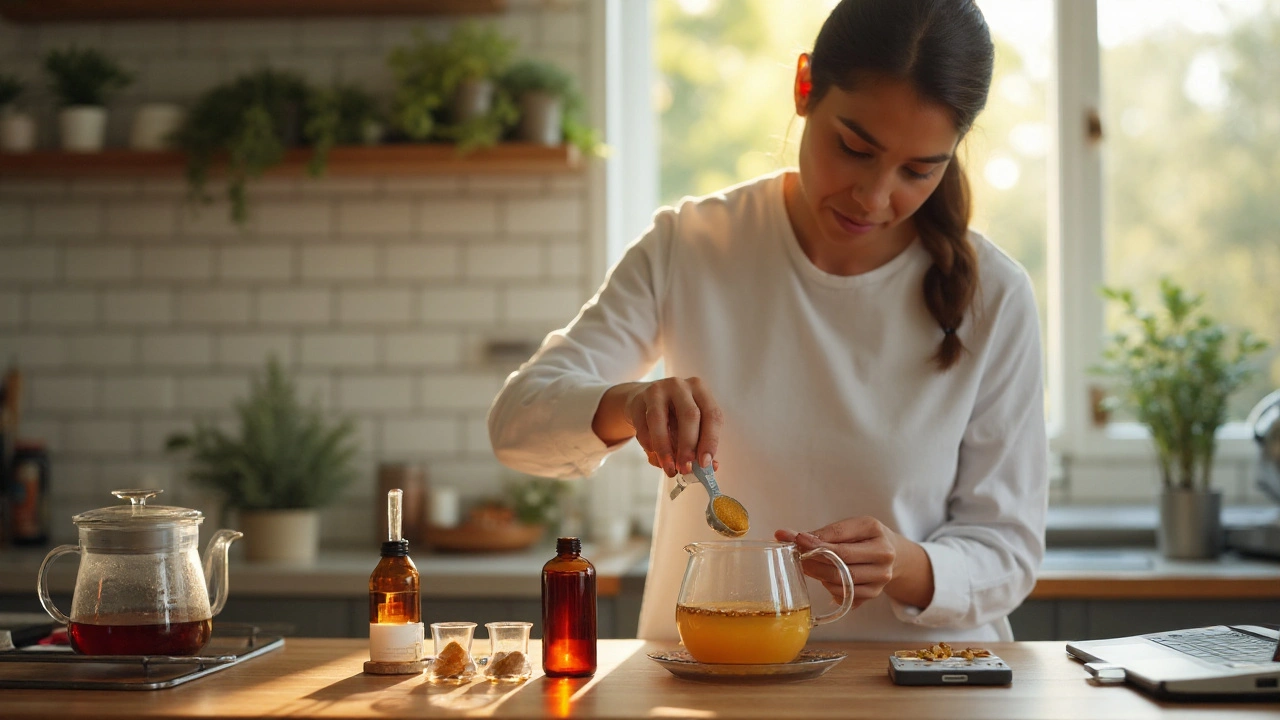Interstitial Cystitis Herbs: Natural Relief Tips
If you live with interstitial cystitis (IC), you know how frustrating daily life can become. The constant bladder pressure, urgency, and pain often push people to look beyond prescription meds. That’s why many turn to herbs – they’re cheap, easy to find, and feel more natural. But do they actually help? Below are the most talked‑about herbs, how to use them, and what the research says.
Top herbs that may calm IC symptoms
Corn silk is the fluffy thread you see on an ear of corn. When brewed as tea, it acts like a mild diuretic and soothes inflamed bladder lining. A typical dose is 1‑2 teaspoons of dried silk in hot water, steeped for 10 minutes, taken 2‑3 times a day.
Marshmallow root contains mucilage that coats the urinary tract. This coating can reduce irritation and the urge to go. Use 1‑2 teaspoons of powdered root per cup of water, sip slowly after meals. Many users report fewer nighttime trips.
Aloe vera juice (the clear part, not the gel) has anti‑inflammatory properties. Start with 1‑2 ounces mixed with water, and watch for any stomach upset. If you tolerate it, you can increase to 4 ounces a day.
Turmeric (curcumin) is famous for joint pain, but its anti‑oxidant effect also helps bladder tissue. A capsule containing 500 mg of curcumin taken with black‑pepper extract boosts absorption. Try one capsule after breakfast.
Chamomile tea is more than a bedtime drink. Its calming effect can ease pelvic muscle spasm, a common IC trigger. Brew a bag for 5 minutes, sip warm, and repeat twice daily.
How to use herbs safely with IC
Herbs aren’t a free‑pass to ignore medical advice. Always tell your doctor before adding anything new, especially if you’re on prescription bladder meds. Some herbs, like aloe, can interact with blood thinners, while high‑dose turmeric may affect liver enzymes.
Start low and go slow. Begin with the smallest recommended dose and track any changes in pain or bathroom trips for at least a week. If you notice an improvement, you can slowly increase the amount; if symptoms worsen, stop and consult a professional.
Quality matters. Choose organic, USDA‑certified products when possible, and avoid blends that contain unknown additives. Buying from reputable brands reduces the risk of contamination or inaccurate labeling.
Combine herbs with lifestyle tweaks for the best chance of relief. Staying hydrated (but not over‑hydrated), limiting caffeine, and practicing pelvic floor relaxation exercises all support bladder health.
Remember, herbs work differently for each person. What eases pain for your friend might do nothing for you. Keep a simple journal: note the herb, dose, time of day, and any change in symptoms. Over weeks, patterns will emerge, helping you fine‑tune your natural regimen.
Bottom line: herbs can be a helpful piece of the IC puzzle, but they’re not a cure‑all. Pair them with a solid treatment plan, stay informed, and give your body the time it needs to respond. You deserve relief, and the right herb might be the missing link.
Herbal Remedies for Bladder Pain: Evidence, Safety, and Practical Tips
- Cheryl Moran
- September 16, 2025
- 17 Comments
Clear, evidence-based guide to herbal options for bladder pain-from UTIs to interstitial cystitis. What works, doses, safety, and when to see your GP.
read more